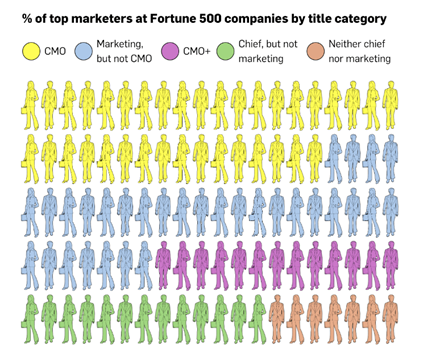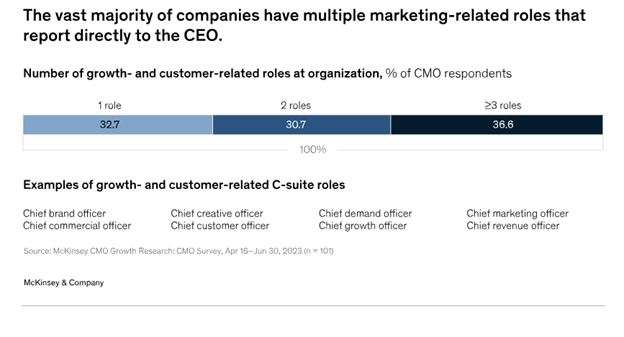
A splendid article in AdWeek prompted thoughts on the evolving role of the leaders in marketing. Yes, a plural there as we are seeing more and more evidence that marketing is becoming a distributed function in major organizations and the old model of one leader and one team doing everything is no longer the common template for all. The AdWeek article focused on the role of the Chief Brand Officer and the inter-relationship with the Chief Marketing Office and yields some very provocative insights. Its by-line was ‘Marketing a brand is one job; nurturing it is a different skill set’. That used to be one job but today, the expanding possibilities for achieving both of those imperatives are so big that it makes sense that the job is fragmenting. A leader of marketing operations at a global technology company stated on a podcast that they track “over 125 specific capabilities, in 20 buckets” to ensure powerful delivery against their principles for driving growth. The principles of marketing remain the same, but this demonstrates that the practice is becoming exponentially more complex. This underlines why we are seeing a fractionalization of marketing and the gradual disappearance of the title ‘Chief Marketing Officer’ as digital ecosystems evolve, customer experience becomes elevated, barriers to entry dissolve and greater agility is required. In a survey by Spencer Stuart in June 2023, only 36% of Fortune 500 companies had the traditional CMO title – nicely illustrated by this graphic from another AdWeek article. Source: AdWeek, March 2024 A further report in June from McKinsey noted that 67% of CEOs have more than one leader reporting to them for marketing. While the classic CMO position may be fading, the strategic importance of marketing remains paramount. This trend signals a broader shift in how businesses approach marketing and customer engagement. We are seeing the CMO title being replaced by, or complemented with, a variety of alternatives, reflecting a more fragmented approach to marketing leadership. Some common positions include: TCB Takeaway: While the classic CMO position may be fading, the strategic importance of marketing remains paramount. The future of marketing leadership lies in its integration with other core business functions, a holistic approach to customer engagement, and driving growth in the evolving marketplace. This is redefining the practice of marketing but making it even more important that marketers are constantly fueled with broad business insights.

White House Task Force on the 2026 FIFA World Cup
March 24, 2025
Tricky Topics and Possible Actions for Communicators Today
March 11, 2025
One Common Language
March 10, 2025
“Make America Healthy Again”—A marketing and comms challenge
February 26, 2025
Are Mass Packaging Manufacturers Losing Their Metal?
February 18, 2025
